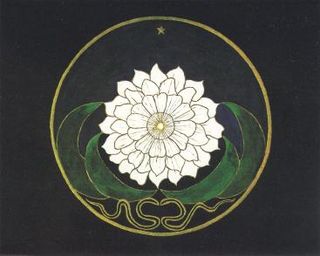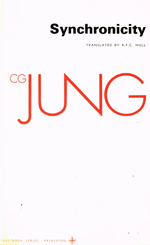
Carl Gustav Jung was a Swiss psychiatrist and psychoanalyst who founded analytical psychology. Jung's work was influential in the fields of psychiatry, anthropology, archaeology, literature, philosophy, and religious studies. Jung worked as a research scientist at the famous Burghölzli hospital, under Eugen Bleuler. During this time, he came to the attention of Sigmund Freud, the founder of psychoanalysis. The two men conducted a lengthy correspondence and collaborated, for a while, on a joint vision of human psychology.
Psychiatric Studies is Volume 1 in The Collected Works of C. G. Jung, a series of books published by Princeton University Press in the U.S. and Routledge & Kegan Paul in the U.K. It contains papers published in German between 1902 and 1905, translated by R.F.C. Hull and edited by Sir Herbert Read, Michael Fordham and Gerhard Adler. The papers focus on descriptive and experimental psychiatry from Jung's early days in medical practice. They show the influence on Jung of Eugen Bleuler and Pierre Janet.
Experimental Researches is Volume 2 in The Collected Works of C. G. Jung, a series of books published by Princeton University Press in the U.S. and Routledge & Kegan Paul in the U.K. It was translated from German by R.F.C. Hull and edited by Gerhard Adler. The book includes Jung's word association studies in normal and abnormal psychology, two 1909 Clark University lectures on the association method, and three articles on psychophysical researches from American and English journals in 1907 and 1908.
Freud & Psychoanalysis is Volume 4 in The Collected Works of C. G. Jung, a series of books published by Princeton University Press in the U.S. and Routledge & Kegan Paul in the U.K. This volume contains most of Jung's published writings on Freud and psychoanalysis from 1906-1916, with two papers from later years. The former period extends from the time of enthusiastic collaboration between Jung and Freud, through that when Jung's growing appreciation of religious experience and his criticism of Freud's emphasis on psychopathology led to their final break. Subjects covered include Freud's theory of hysteria, the analysis of dreams, the theory of psychoanalysis, and more.
Symbols of Transformation is Volume 5 in The Collected Works of C. G. Jung, a series of books published by Princeton University Press in the U.S. and Routledge & Kegan Paul in the U.K. It is a complete revision of Psychology of the Unconscious (1911–12), Carl Jung's first important statement of his independent position in psychology.

Two Essays on Analytical Psychology is Volume 7 in The Collected Works of C. G. Jung, a series of books published by Princeton University Press in the U.S. and Routledge & Kegan Paul in the U.K. It has become known as one of the best introductions to Jung's work. It includes the essays "The Relations between the Ego and the Unconscious" and "On the Psychology of the Unconscious," wherein Jung presented the core of his views about psychology. Historically, they mark the end of Jung's close association with Freud and show his attempt to integrate the work of Freud and Adler into a comprehensive framework. An appendix includes original versions of the essays "New Paths in Psychology" (1912) and "The Structure of the Unconscious" (1916),, to show the development of his thinking in later versions.
Aion: Researches into the Phenomenology of the Self is Part 2 of the Volume 9 in The Collected Works of C. G. Jung, a series of books published by Princeton University Press in the U.S. and Routledge & Kegan Paul in the U.K. Originally published in German (1951), it is a major work of Jung's later years. Its central theme is the symbolic representation of the psychic totality through the concept of the Self, whose traditional historical equivalent is the figure of Christ. Jung demonstrates his thesis by an investigation of the Christian fish symbol, and of Gnostic and alchemical symbolism. He regards these as phenomena of cultural assimilation. Chapters on the ego, the shadow, and the anima and animus, provide a valuable summary of these elementary concepts in Jungian psychology.
Psychology and Religion: West and East is Volume 11 in The Collected Works of C. G. Jung, a series of books published by Princeton University Press in the U.S. and Routledge & Kegan Paul in the U.K. It contains sixteen studies in religious phenomena, including Psychology and Religion and Answer to Job. The New York Times Book Review said "Nowhere else than in this study of the interplay of East and West is the point so forcefully made that man's cultural past somehow molds his feelings and thinking as well as his highly contrasting attitudes toward reality."

Alchemical Studies is Volume 13 in The Collected Works of C. G. Jung, a series of books published by Princeton University Press in the U.S. and Routledge & Kegan Paul in the U.K. It consists of five long essays that trace Carl Jung's developing interest in alchemy from 1929 onward. An introduction and supplement to his major works on the subject, it is illustrated with 42 patients' drawings and paintings.

Mysterium Coniunctionis, subtitled An Inquiry into the Separation and Synthesis of Psychic Opposites in Alchemy, is Volume 14 in The Collected Works of C. G. Jung, published in 1970 by Princeton University Press in the United States and by Routledge and Kegan Paul in the United Kingdom. Completed in his 81st year, it is Carl Jung's last major work on the synthesis of opposites in alchemy and psychology.
Many of Jung's most important works have been collected, translated, and published in a 20-volume set by Princeton University Press, entitled The Collected Works of C. G. Jung.

Psychogenesis of Mental Disease is Volume 3 in The Collected Works of C. G. Jung, a series of books published by Princeton University Press in the U.S. and Routledge & Kegan Paul in the U.K. It was edited and translated from German by Sir Herbert Read, R.F.C. Hull and Gerhard Adler. The book shows the development of Jung's thoughts about the nature of mental illness, and established him as a pioneer and scientific contributor to psychiatry. It contains On the Psychology of Dementia Praecox (1907), which Abraham Brill described as "indispensable for every student of psychiatry". Also included are nine other papers in psychiatry, from The Content of the Psychoses, (1908), to two papers from 1956 and 1958, discussing Jung's conclusions after long experience in the psychotherapy of schizophrenia.
Structure & Dynamics of the Psyche is Volume 8 in The Collected Works of C. G. Jung, a series of books published by Princeton University Press in the U.S. and Routledge & Kegan Paul in the U.K. It is a revised translation of one of Jung's most important longer works. There is an appendix of four shorter papers on personality type, published between 1913 and 1935.
Archetypes and the Collective Unconscious is Part 1 of Volume 9 in The Collected Works of C. G. Jung, a series of books published by Princeton University Press in the U.S. and Routledge & Kegan Paul in the U.K.

Synchronicity: An Acausal Connecting Principle, by C.G. Jung, is a book published by Princeton University Press in 1960. It was extracted from Structure & Dynamics of the Psyche, which is Volume 8 in The Collected Works of C. G. Jung. The book was also published in 1985 by Routledge.

Spirit in Man, Art, and Literature, sometimes styled as The Spirit of..., is Volume 15 in The Collected Works of C. G. Jung, a series of books published by Princeton University Press in the U.S. and Routledge & Kegan Paul in the U.K. It contains nine essays, written between 1922 and 1941, on Paracelsus, Freud, Picasso, the sinologist Richard Wilhelm, Joyce's Ulysses, artistic creativity generally, and the source of artistic creativity in archetypal structures.
Practice of Psychotherapy is Volume 16 in The Collected Works of C. G. Jung, a series of books published by Princeton University Press in the U.S. and Routledge & Kegan Paul in the U.K. It contains essays on aspects of analytical therapy, specifically the transference, abreaction, and dream analysis. There is also an additional essay, "The Realities of Practical Psychotherapy", which was found among Jung's posthumous papers.
Development of Personality is Volume 17 in The Collected Works of C. G. Jung, a series of books published by Princeton University Press in the U.S. and Routledge & Kegan Paul in the U.K. It contains papers on child psychology, education, and individuation, emphasizing the extreme importance of parents and teachers in the genesis of the intellectual, feeling, and emotional disorders of childhood. A final paper deals with marriage as an aid or obstacle to self-realization.
The Symbolic Life is Volume 18 in The Collected Works of C. G. Jung, a series of books published by Princeton University Press in the U.S. and Routledge & Kegan Paul in the U.K. It contains miscellaneous writings that Jung published after the Collected Works had been planned, minor and fugitive works that he wished to assign to a special volume, and early writings that came to light in the course of research.









